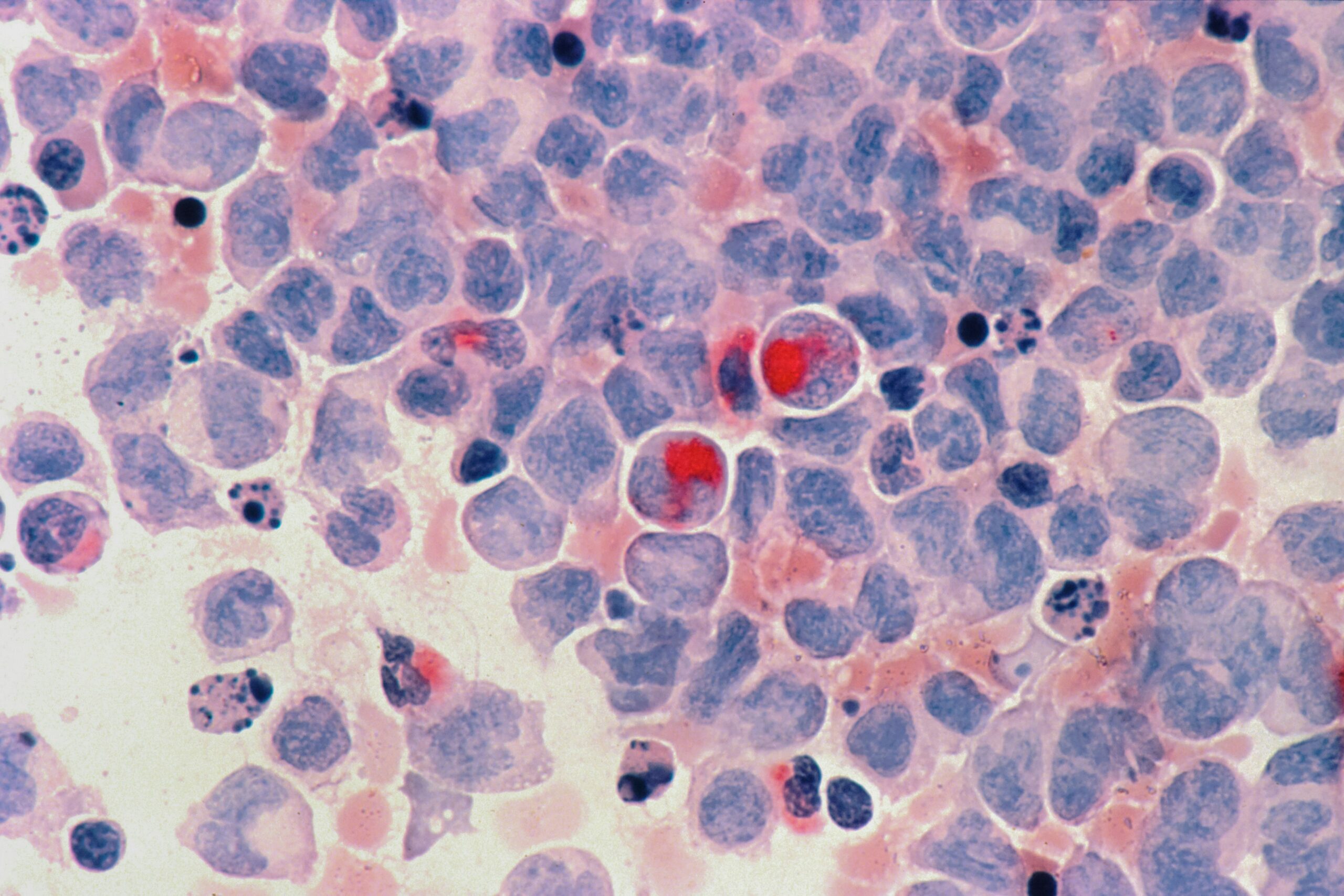
Learning about secondary cancer can feel overwhelming, but understanding it is an important step in managing your health. Unlike primary cancer, which starts in one part of your body, secondary cancer occurs when cancer cells spread to other areas. This process, known as metastasis, can create new challenges that require a different approach to treatment and care.
You might wonder why secondary cancer develops or how it affects your body. Knowing the signs, risk factors, and available treatments can empower you to make informed decisions. Whether you’re facing a diagnosis or supporting someone who is, understanding secondary cancer helps you navigate this journey with clarity and confidence.
Key Takeaways
- Secondary cancer, also known as metastatic cancer, occurs when cancer cells spread from the primary site to other areas of the body through the bloodstream or lymphatic system.
- Common symptoms of secondary cancer include unexplained weight loss, persistent pain, fatigue, swelling, and organ-specific issues like difficulty breathing or neurological deficits.
- Risk factors for secondary cancer include advanced cancer stages, aggressive tumor types, weakened immune systems, and tumors located near lymph nodes or blood vessels.
- Diagnosis relies on imaging techniques, biopsies, and molecular tests to determine the location, type, and source of metastasis, guiding treatment plans effectively.
- Treatment options include surgery, chemotherapy, radiation therapy, targeted therapy, and immunotherapy, tailored to the type and extent of the disease.
- Managing secondary cancer involves a combination of medical care, emotional support, and lifestyle adjustments such as balanced nutrition, physical activity, and stress management.
What Is Secondary Cancer?
Secondary cancer, or metastatic cancer, forms when cancer cells spread from the primary site to another part of your body. These cells travel through your bloodstream or lymphatic system, establishing tumors in areas such as your liver, bones, lungs, or brain.
The characteristics of secondary cancer align with the primary cancer’s type. For example, if breast cancer spreads to your bones, the secondary cancer in your bones is made up of breast cancer cells, not bone cancer cells.
Secondary cancer often indicates an advanced stage of the disease. Common symptoms include unexplained weight loss, persistent pain, fatigue, or swelling, depending on the affected area. Diagnosis relies on imaging tests, biopsies, and understanding the original cancer type.
Treatment focuses on controlling cancer’s spread and relieving symptoms. Options may include surgery, chemotherapy, radiation therapy, targeted therapy, or immunotherapy, tailored to the type and extent of the cancer. Understanding secondary cancer helps you make informed decisions about care and treatment.
Causes Of Secondary Cancer
Secondary cancer develops when cancer cells spread from the primary site to other organs or tissues. Understanding how it occurs and identifying contributing factors can help with early detection and prevention.
How It Develops
Cancer cells detach from the primary tumor and invade nearby tissues or travel through the bloodstream or lymphatic system to reach distant organs. This process, called metastasis, enables these cells to form new tumors. These secondary tumors retain the original cancer’s characteristics, affecting how they are treated. For example, if lung cancer cells spread to the brain, the resulting tumor remains lung cancer rather than becoming a brain tumor.
Common Risk Factors
Several factors increase the likelihood of secondary cancer.
- Advanced Cancer Stages: Cancers diagnosed at later stages have a higher chance of spreading to other areas.
- Aggressive Tumor Types: Certain cancers, such as lung or pancreatic cancer, are more likely to metastasize due to their aggressive nature.
- Weakened Immune System: Conditions like HIV/AIDS or medications like chemotherapy lower the body’s ability to fight off spreading cancer cells.
- Tumor Location: Tumors near lymph nodes or blood vessels create easier pathways for cancer cells to move to distant organs.
Identifying these risks early can guide monitoring and assist in planning effective treatments.
Symptoms Of Secondary Cancer
Recognizing symptoms of secondary cancer is vital for early detection and effective treatment. Symptoms vary depending on the location and extent of the spread.
Early Warning Signs
Early symptoms often appear mild but shouldn’t be overlooked. Common early indicators include:
- Unexplained Weight Loss: Losing more than 10% of your body weight without changes in diet or exercise can signal metastasis.
- Persistent Fatigue: A constant feeling of tiredness even after adequate rest might suggest cancerous cell activity in the body.
- Localized Pain: Pain that persists or worsens in a specific area, such as bones or organs, can be an early clue.
- Swelling: Swelling or lumps in areas like the abdomen, neck, or lymph nodes often indicate cancer spread.
- Skin Changes: Darkening, reddening, or other abnormalities in the skin over or near the affected area may arise.
Seek medical evaluation for these symptoms, particularly if combined with a history of cancer.
Advanced Symptoms
Advanced secondary cancer symptoms signal wider bodily involvement. These include:
- Severe Pain: Intense, progressive pain in bones or affected organs, resistant to standard treatments.
- Organ-Specific Issues: Symptoms like difficulty breathing (lungs), jaundice (liver), or neurological changes (brain) indicate specific organ impacts.
- Fractures: Weakening bones due to metastatic spread can lead to unexpected fractures.
- Severe Fatigue: Worsened fatigue, interfering significantly with daily activities, is common in later stages.
- Neurological Deficits: Symptoms such as seizures, confusion, or numbness suggest brain or spinal cord involvement.
Advanced symptoms demand urgent medical attention to address complications and manage disease progression effectively.
Diagnosis Of Secondary Cancer
Detecting secondary cancer involves identifying the presence of metastasis and determining its location. A combination of diagnostic tests and imaging techniques helps confirm the diagnosis and guide treatment planning.
Diagnostic Tests
Doctors use specific diagnostic tests to analyze tissue and assess secondary cancer. A biopsy confirms whether cancer is secondary by examining tissue under a microscope. Blood tests measure tumor markers like CA-125 for ovarian cancer or PSA for prostate cancer, which help track cancer-related activity. Fluid aspiration, such as extracting cerebrospinal or pleural fluid, identifies cancer in specific anatomical areas.
Genomic and molecular tests detect genetic mutations in cancer cells, aiding in selecting targeted therapies. These tests offer detailed data for determining the nature and source of secondary cancer.
Imaging Techniques
Imaging scans play a crucial role in locating and evaluating secondary cancer. CT scans provide cross-sectional images to identify tumors in the chest, abdomen, and pelvis. MRI scans visualize soft tissues, such as the brain and spinal cord, offering clarity on tumor size and extent. PET scans detect metabolic activity in cancerous tissue, often combined with CT for detailed results.
X-rays reveal abnormalities in bones and lungs, while ultrasound uses sound waves to detect tumors in organs like the liver or pelvis. Bone scans identify cancer spread to bones, essential for monitoring skeletal-related metastasis. These imaging methods assist doctors in staging cancer and formulating the best treatment strategies.
Treatment Options For Secondary Cancer
Treatment for secondary cancer depends on the type, location, and extent of spread. The approach is often personalized to maximize effectiveness and minimize side effects.
Surgery
Surgery removes secondary tumors if they’re localized and accessible. It often plays a role in reducing tumor burden, alleviating symptoms, or preventing complications. For example, surgeons may extract isolated metastases in organs like the liver or lungs. Surgery might also combine with other treatments for comprehensive cancer control.
Chemotherapy
Chemotherapy uses drugs to destroy cancer cells or slow their growth. It’s effective for cancers that are widespread or unamenable to surgery. Depending on the specific cancer type, it may involve single agents or combination regimens. For instance, specific chemotherapies target breast cancer that has metastasized to bones.
Radiation Therapy
Radiation therapy shrinks tumors or alleviates pain caused by secondary cancer. High-energy beams target specific metastatic regions, like the brain or spine, to provide localized control. For cancers like prostate metastases involving bones, radiation often provides significant relief while limiting impact on surrounding tissues.
Targeted Therapy
Targeted therapy blocks specific molecules driving cancer progression. For example, HER2 inhibitors treat secondary cancer stemming from HER2-positive breast cancer. These therapies are often selected through genomic or molecular tests, ensuring a precise approach that spares healthy cells and focuses on tumor-specific abnormalities.
Coping With Secondary Cancer
Managing secondary cancer involves addressing emotional, physical, and lifestyle challenges. Building resilience and seeking targeted support can enhance your quality of life during treatment.
Emotional Support
Secondary cancer can bring significant emotional strain. Accessing professional counseling, support groups, or therapy can provide a safe space to express feelings and gain perspective. Discuss concerns with your care team to mitigate stress and anxiety linked to treatment or progression. Engage family and friends in open communication to strengthen your emotional network. Explore relaxation techniques, such as mindfulness or meditation, to help manage feelings of fear or uncertainty.
Lifestyle Adjustments
Adapting your daily habits can support physical well-being during treatment. Focus on balanced nutrition with foods rich in vitamins, minerals, and proteins to energize your body. Incorporate physical activity, like short walks or gentle yoga, to boost stamina, but consult your medical team to ensure safety. Improve sleep quality by establishing consistent bedtime routines and creating a calming environment. Avoid smoking and excessive alcohol, as these can impact your immunity and overall health. Plan activities around your energy levels to conserve strength while maintaining a sense of normalcy.
Conclusion
Understanding secondary cancer equips you with the knowledge to recognize symptoms, explore treatment options, and make informed decisions about your care. While a diagnosis can feel overwhelming, advancements in medical treatments and supportive care offer hope and improved quality of life.
By staying proactive about your health, seeking timely medical advice, and leaning on emotional support systems, you can navigate the challenges of secondary cancer with resilience. Remember, you’re not alone in this journey, and resources are available to guide and support you every step of the way.
Frequently Asked Questions
What is secondary cancer?
Secondary cancer, or metastatic cancer, occurs when cancer cells spread from their original site to other parts of the body through the bloodstream or lymphatic system. The secondary tumor retains the characteristics of the primary cancer.
How does secondary cancer develop?
It develops through metastasis, where cancer cells detach from the primary tumor, invade nearby tissues, or travel to distant organs. Risk factors include advanced cancer stages, aggressive tumors, and weakened immunity.
What are the common symptoms of secondary cancer?
Symptoms may include unexplained weight loss, persistent pain, fatigue, swelling, and skin changes. Advanced symptoms like severe pain, fractures, and neurological issues indicate widespread involvement.
How is secondary cancer diagnosed?
Doctors use imaging tests like CT scans, MRIs, and PET scans, along with biopsies and blood tests for tumor markers. Molecular tests may guide personalized treatment.
What are the treatment options for secondary cancer?
Treatment may include surgery, chemotherapy, radiation therapy, targeted therapy, or immunotherapy. The approach depends on the cancer type, location, and extent of spread.
Can secondary cancer be cured?
Cure is challenging but not impossible, depending on factors like cancer type and spread. Treatments aim to manage symptoms, slow progression, and improve quality of life.
What causes secondary cancer?
Secondary cancer is caused by metastasis. Factors like tumor aggressiveness, advanced cancer stages, or proximity to blood vessels or lymph nodes increase the risk of spread.
How can I cope with the emotional challenges of secondary cancer?
Seek emotional support through counseling, support groups, and open communication with loved ones. Lifestyle changes like balanced nutrition, exercise, and quality sleep may reduce stress.
Are lifestyle changes beneficial during secondary cancer treatment?
Yes, healthy habits like balanced meals, regular physical activity, and avoiding smoking or excessive alcohol enhance resilience, improve energy, and support overall well-being during treatment.
Why do secondary tumors retain the characteristics of the primary cancer?
Secondary tumors arise from the same type of cells as the primary cancer, so their characteristics, including cell type, remain the same. This helps guide appropriate treatment strategies.






Comments
Thank you. Comment sent for approval.
Something is wrong, try again later